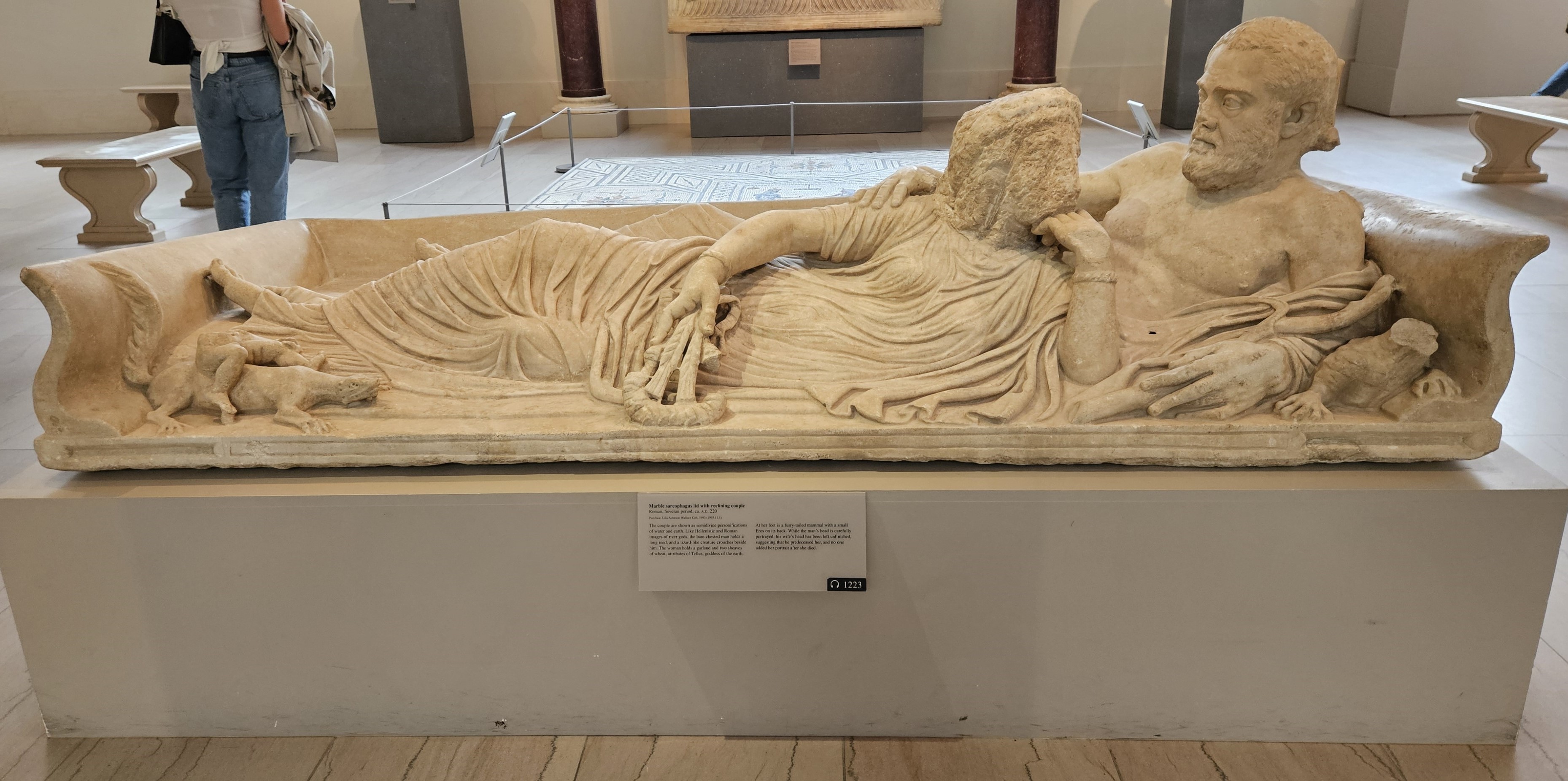
Marble sarcophagus lid with reclining couple
Severan Period, Roman — c. 220 C.E.
The Roman Empire at this time was vast and diverse, adopting artistic traditions from many of its neighbours and constituent states both to reinforce their cultural dominance of the region, and for the genuine pleasure of its citizens. The tradition of decorating funeral vessels like sarcophagi and urns with reclining figures of the deceased traces back to the Etruscans and the fifth-century B.C.E. At a time when wealthy Romans were commissioning masterpieces of sculpture on a regular basis as a primary means of displaying their wealth, decorative sarcophagus lids like this one were not “common”, but they were popular.
The process of commissioning a larger-than-lifesize portrait in marble is a long and deeply personal one - scholars of Roman funerary sculptures warn against attempts to read a universal symbolism into these sculptures, as each one was designed by the individual patron. Why this couple was depicted as semi-divine personifications of water and earth is unknown - we can know only that they wished to be so depicted at the time of commissioning their shared grave. But what is most striking about this piece is that the viewer can immediately tell who died first.
The man’s portrait is so detailed and precise that his haircut remains the primary way that this piece is dated. The wrinkles of his brow and the bags under his eyes are lovingly detailed. He has big ears, and his hairline was receding somewhat. This is a portrait of a specific man, commissioned and overseen by someone who knew his face intimately enough to conjure it from stone.
In contrast, his wife remains a raw, uncut slab. Her body was completed at an earlier stage in the commission, and was likely sculpted from reference to other depictions of women - specifically depictions of Tellus, goddess of the earth - rather than from life. Her face was left blank, in anticipation of her ageing, so that she might be accurately depicted as she was when she passed - or however the overseeing commissioner remembered her. However, while she - or another relative - was alive to oversee the sculpting of her husband’s face upon his passing, it seems that no one extended the same courtesy to her. Whether she was predeceased by her entire remaining family or whether she was simply judged not important enough to be worth the trouble of overseeing a major sculptural commission, the fact remains that she was, in death, forgotten. Her husband’s face persists through the millennia while, in the absence of the labour of grief, hers is now lost forever.
Bibliography
- Picón, Carlos A. 2007. Art of the Classical World in the Metropolitan Museum of Art: Greece, Cyprus, Etruria, Rome no. 467, pp. 398, 497, New York: The Metropolitan Museum of Art.
- Sorabella, J. (2001). A Roman Sarcophagus and Its Patron. Metropolitan Museum Journal, 36, 67–81. https://doi.org/10.2307/1513056